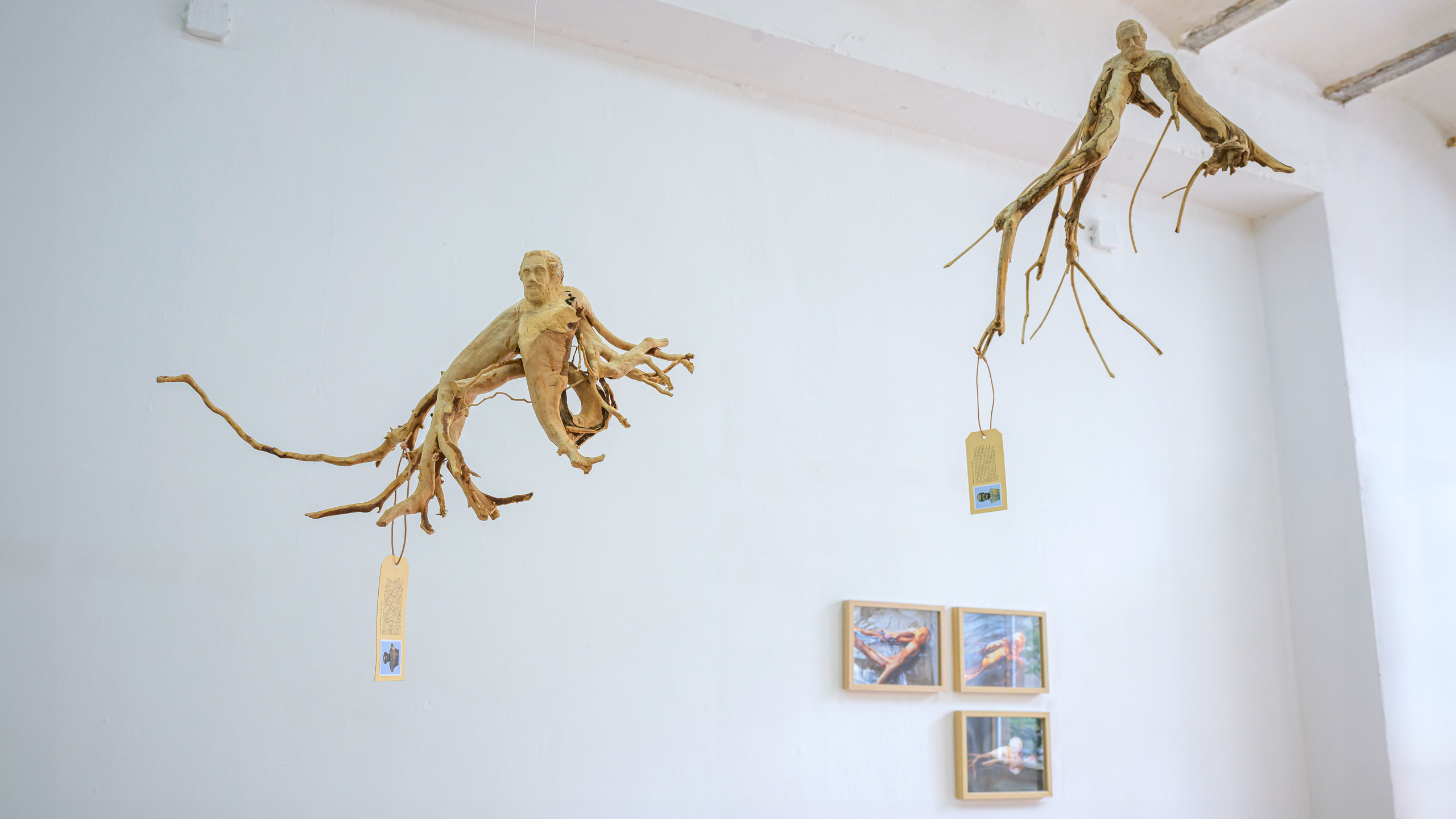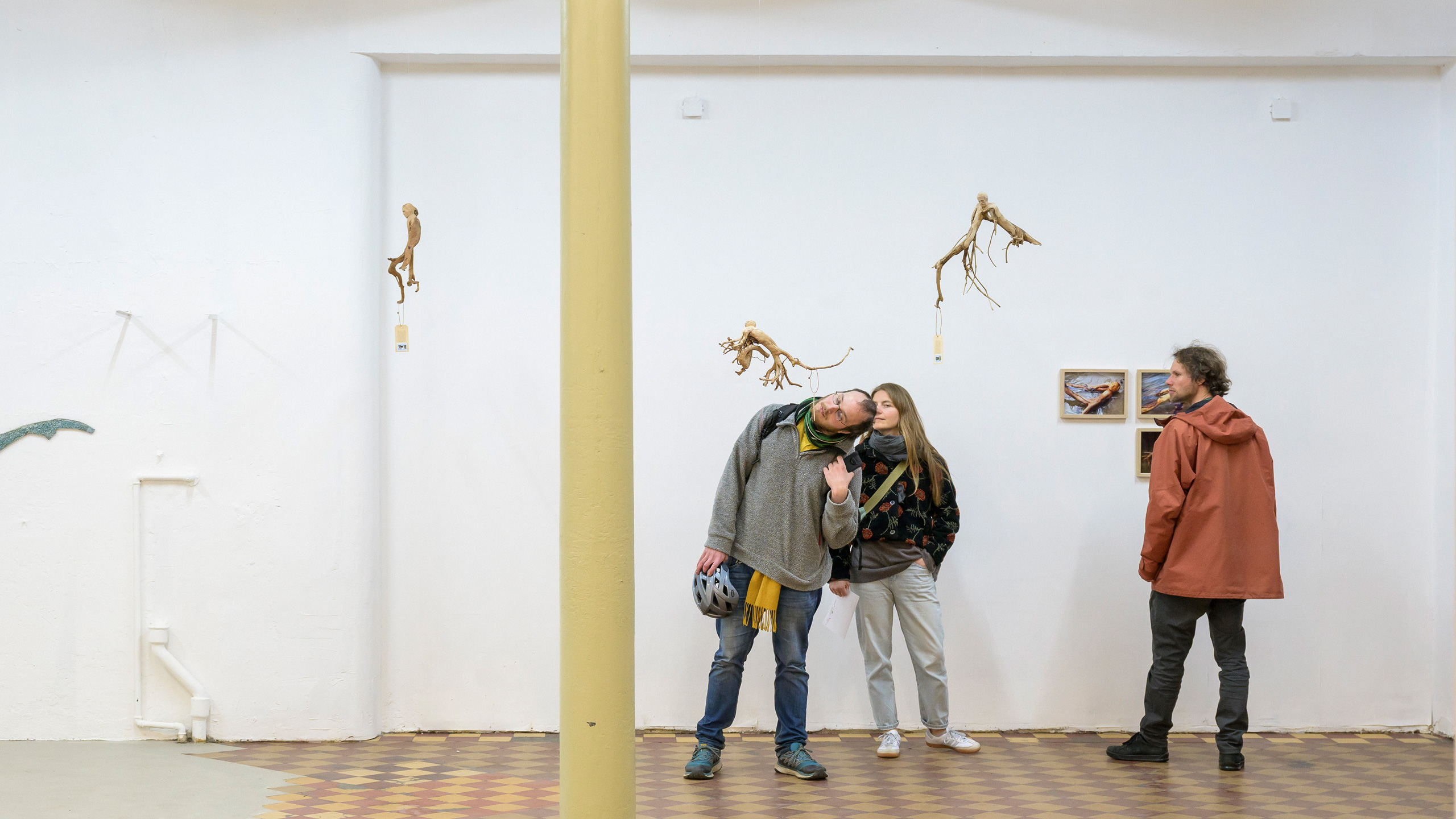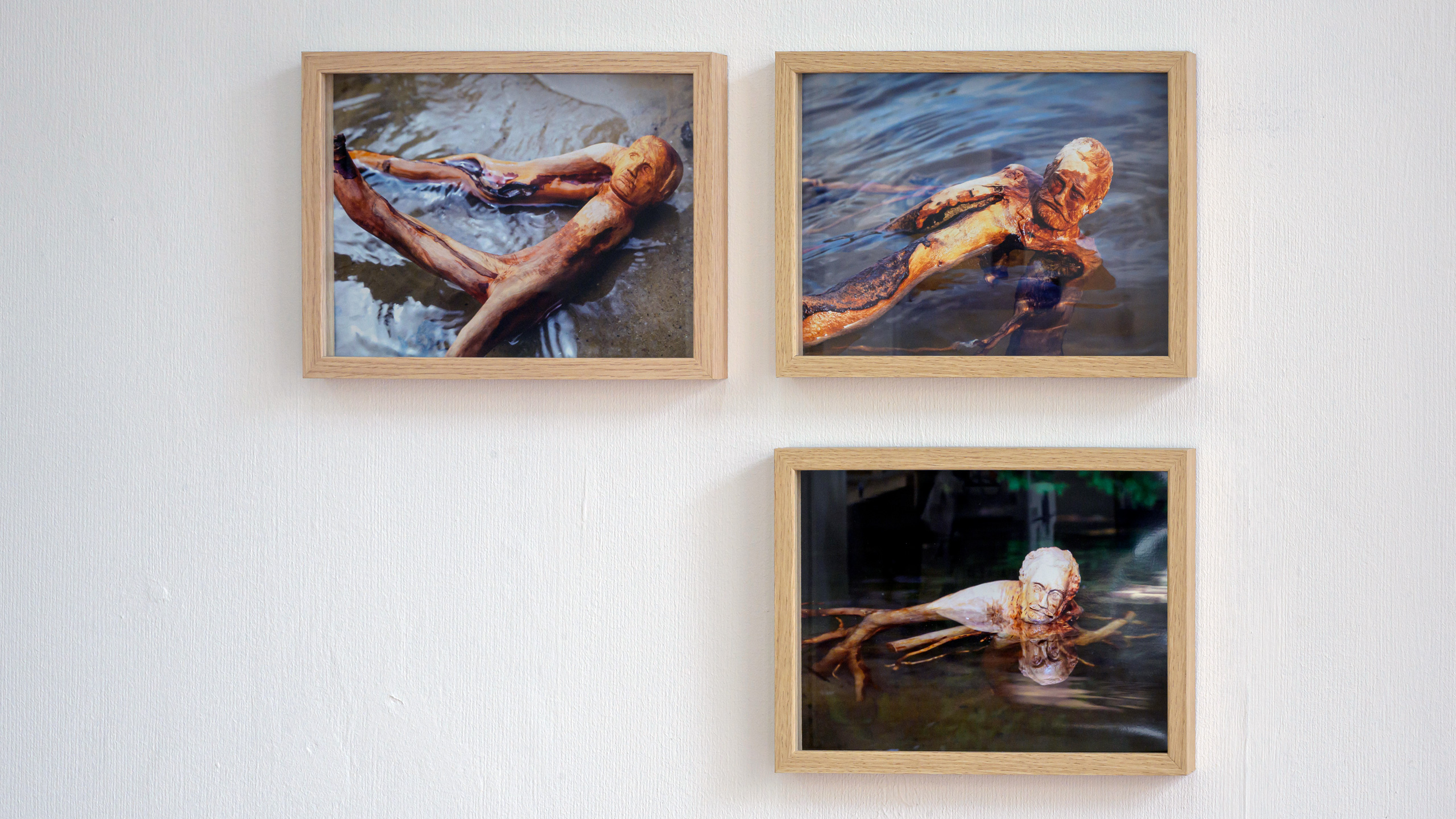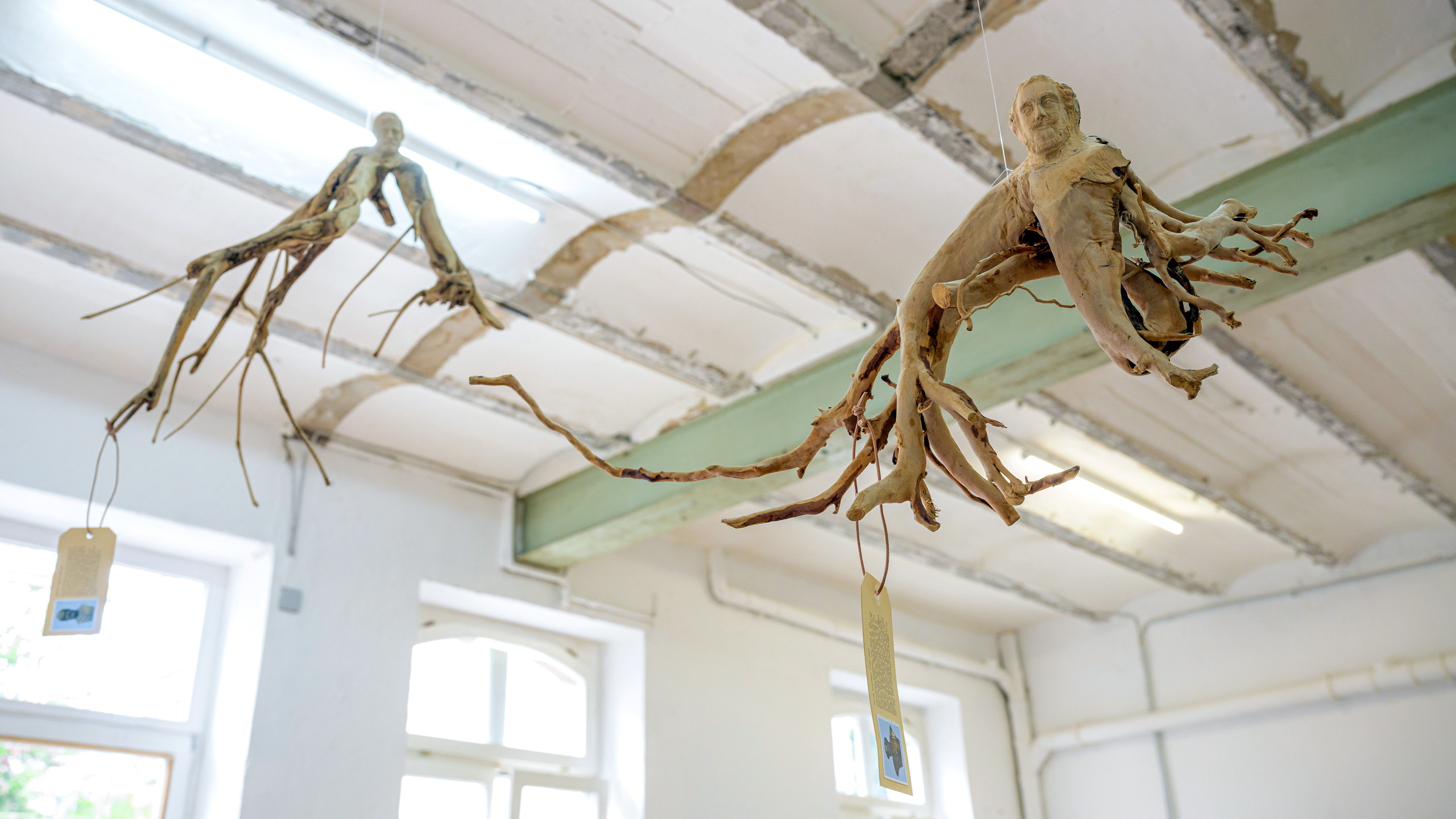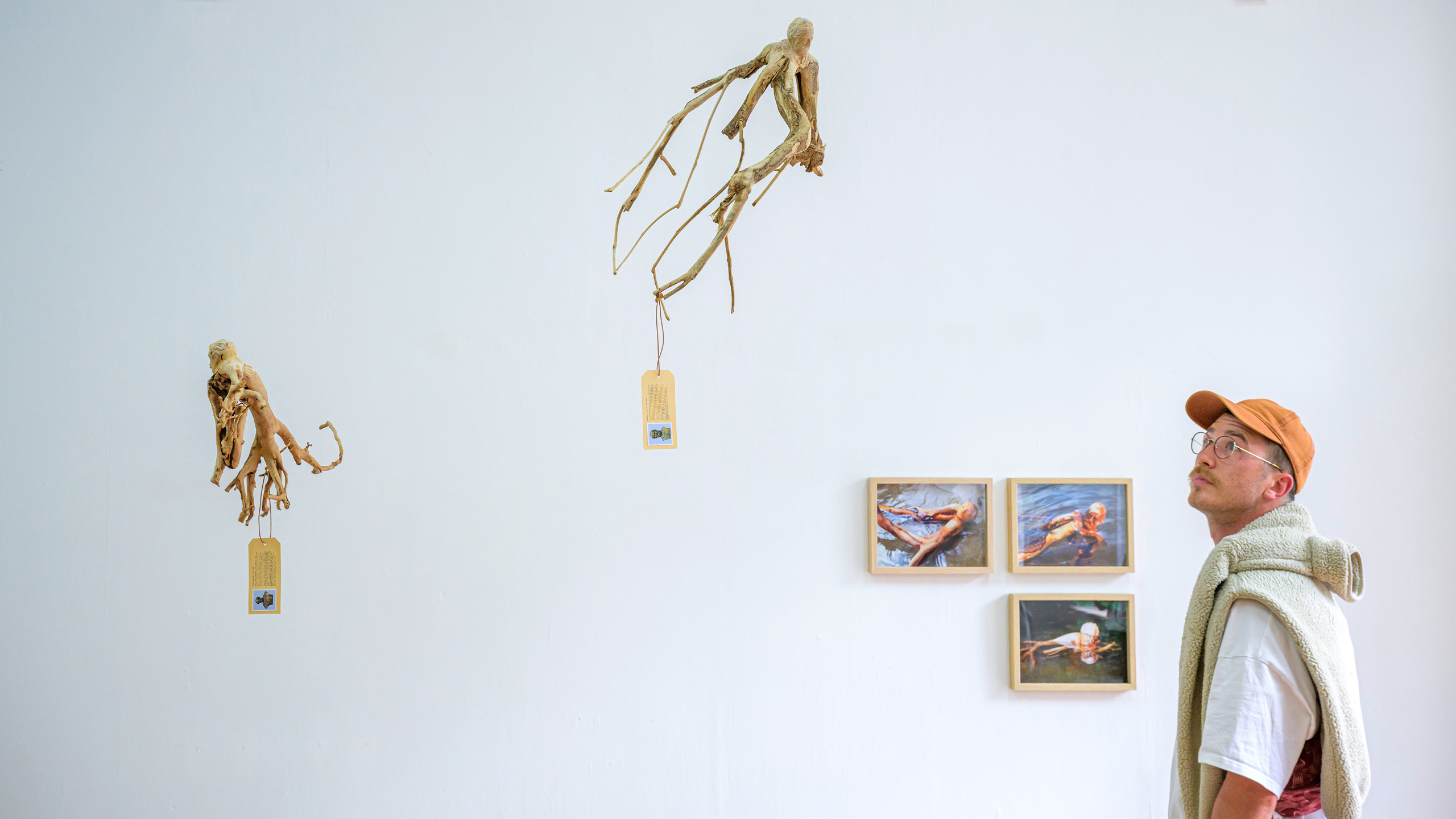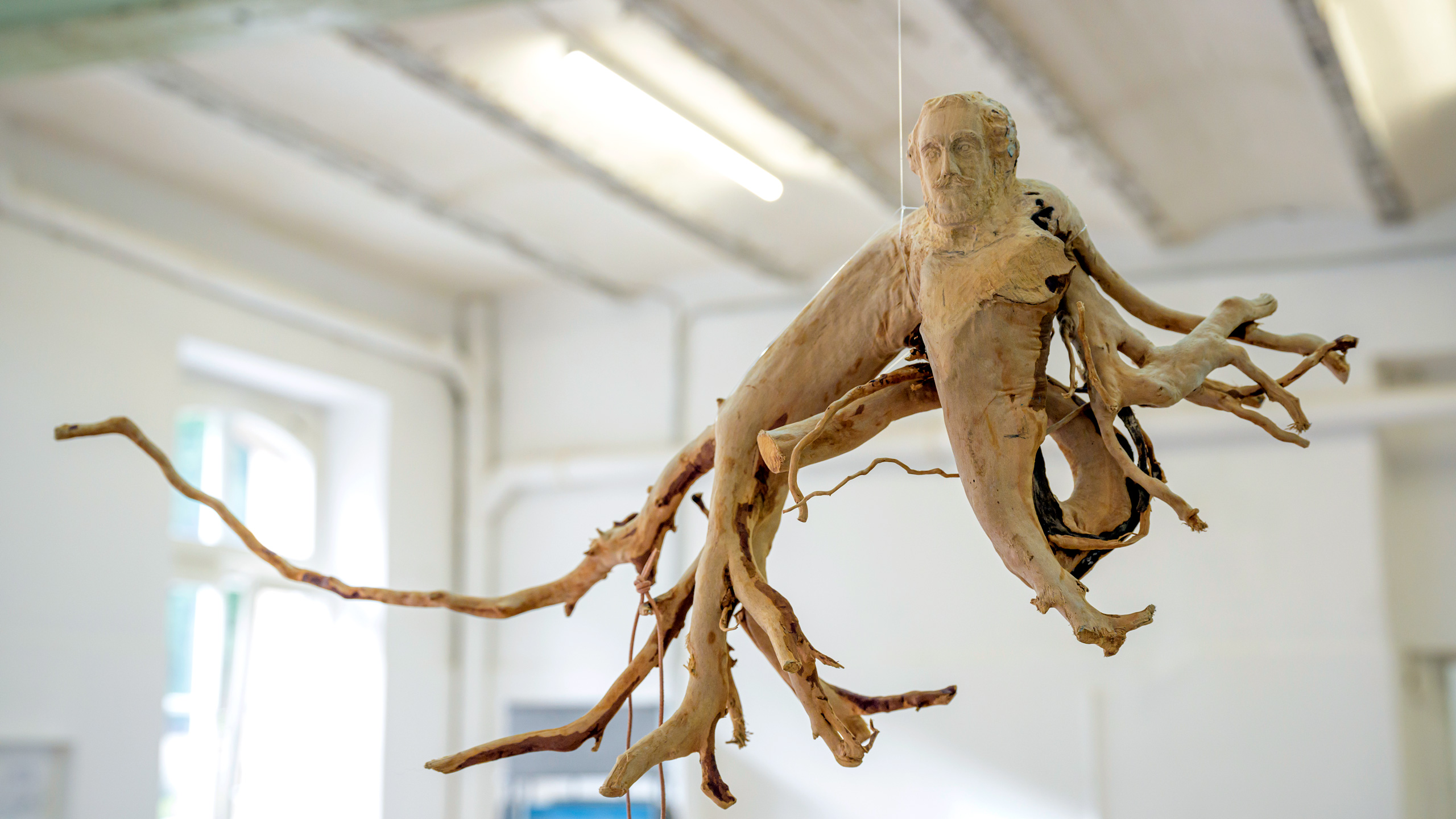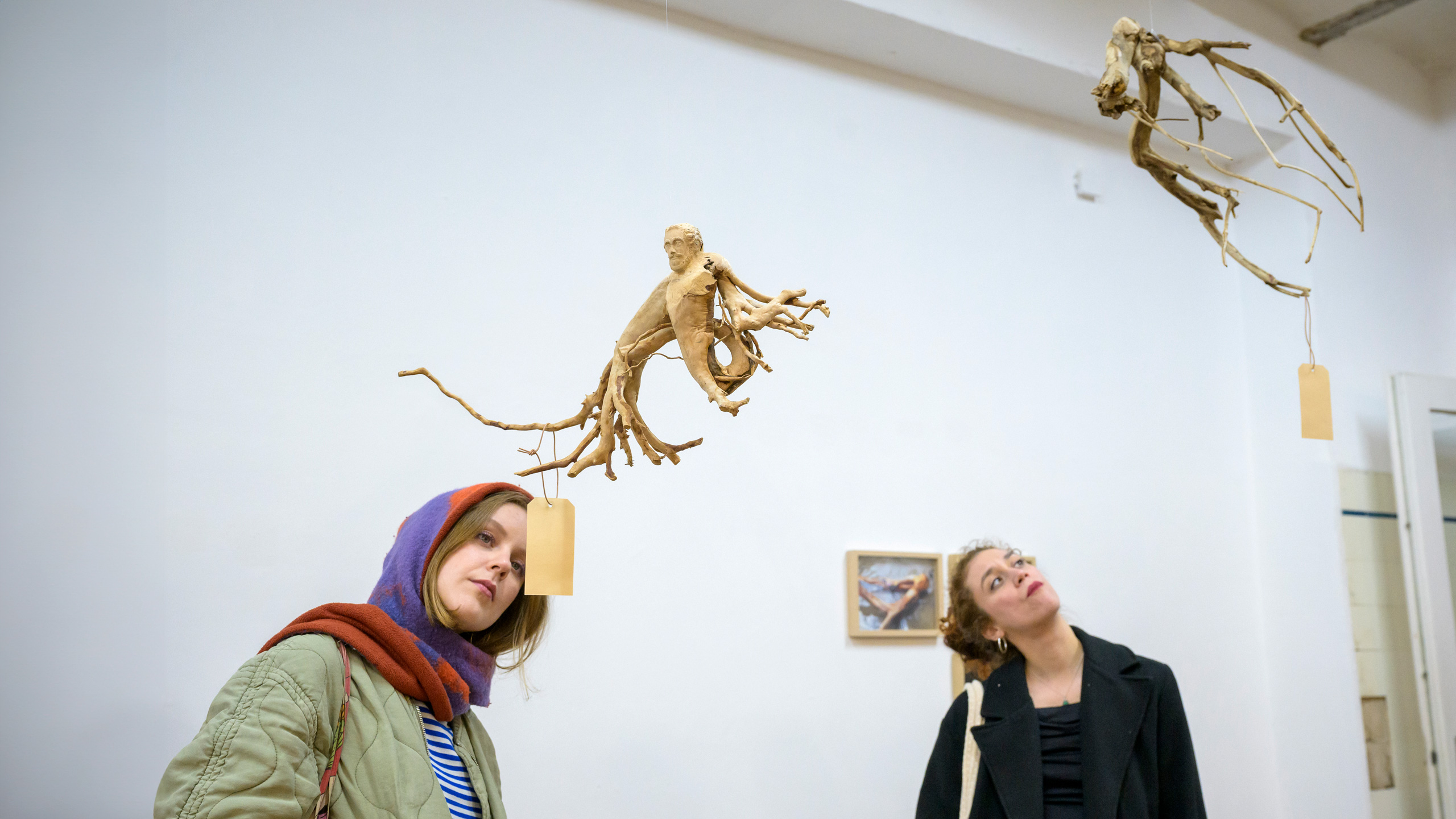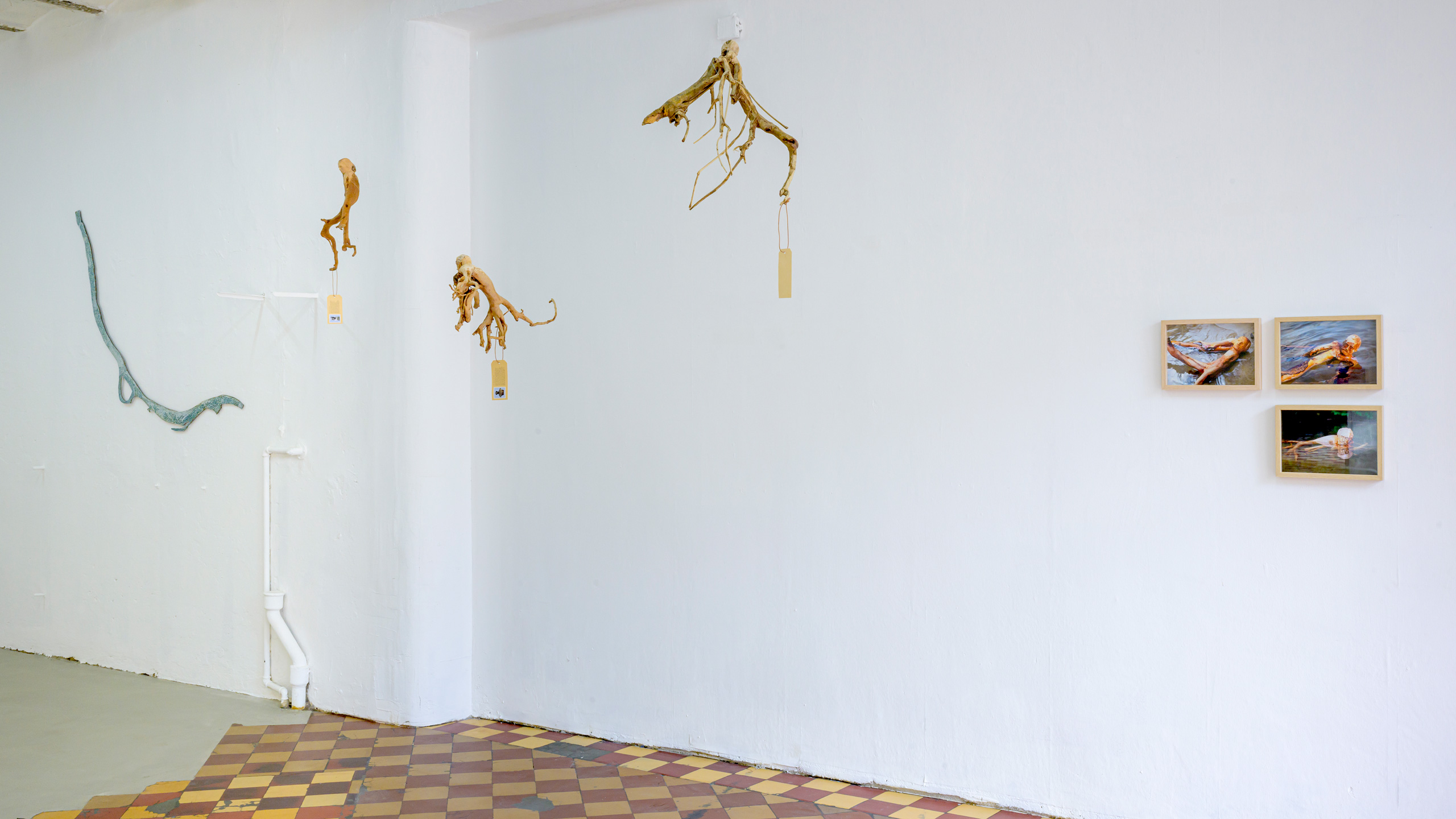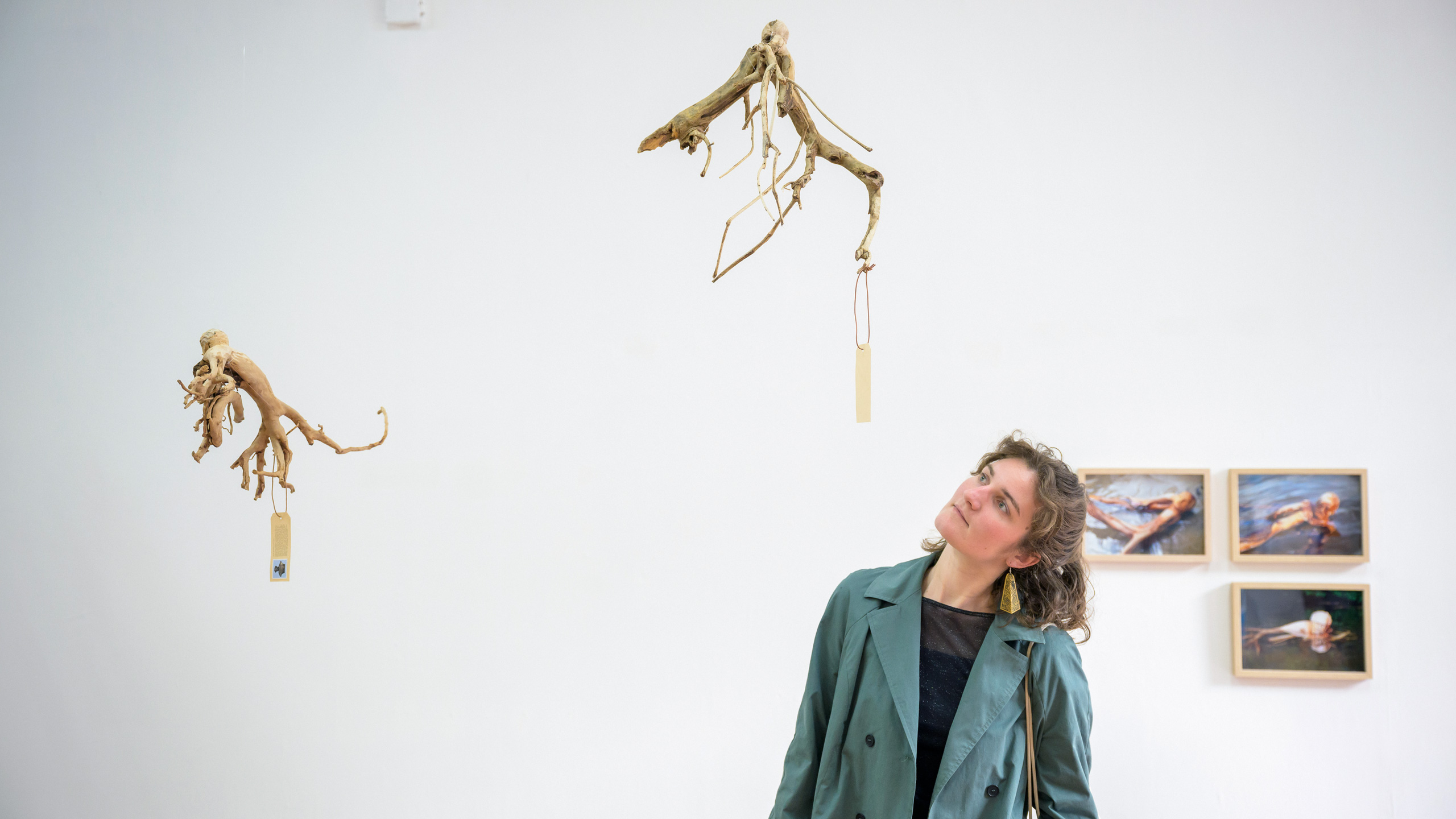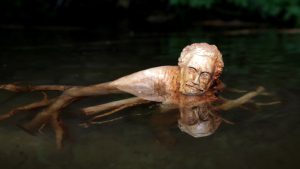Floating Fathers deals with the critical rethinking of objects used in the “renaturalisation” of the Danube river. For the first part of the the project we focussed on the idea of so-called “Raubäume;’’ dead trees that are artificially introduced to the river to enhance the biodiversity and stability of the riverbank. The idea is to merge the industrial “founding fathers” (engineers, industrialists and statesmen) of the modern Danube with the material entity of the Raubäume, transforming them into “floating fathers”, fixed with cement blocks in different places in the river. The exhibition shows several maquette prototypes that will form the basis for the future sculptures in public space, that will be developed in and next to the Danube river. The carved portraits are based on original sculptures found in public space.
Up until into the 19th century, the Danube was an untamed river. But since the industrial revolution, the riverine environment was drastically altered through extensive industrialisation and regulation. To protect the area from flooding and to improve the conditions for navigation, engineers started to remove the original features of the river, such as stone barriers, shallow spots, sand bars, islands, and bends. During the last two centuries hundreds of engineers have worked on the alteration of the river, transforming the Danube into an uninterrupted connection between Central Europe and the Black Sea.
In anthropogenic times, the heroic tale of modernisation took a turn. Globally, we witness the dire consequences of modern industrialisation on the natural environment and there is an increased awareness, leading to projects that “make up” for the large, capitalist inventions of the last centuries. Locally, the climate crisis results in more wildfires, melting glaciers and unstable weather patterns, all phenomena continuously impacting and forming the Danube river. For a long time, it was thought that the river could be tamed, regulated and made fit for human exploration, but the effects of the climate crisis turned the river anew into an unpredictable force. Long periods of drought are followed by intense wet periods, increasing the likelihood of extreme flooding.
Currently, there are many reclamation and rewilding projects underway in different countries, targeted at restoring the river to its original state, enhancing its ability to adapt to the rapidly changing conditions. After the river is widened, it is again filled with ‘natural objects’, such as stones, sandbanks, tree roots and trunks, to recreate a primeval, deep time riverscape from before human intervention. The project’s aim is to critically look at the choices that are made in the design process of this paradoxical “designed wilderness” and to propose alternative restoration objects that can be placed in the river that not only try to gimmick a natural proces but at the same time account for the turbulent history of industrialisation and modernisation, so that the past is not forgotten. For there are important lessons to be learned from the past.
